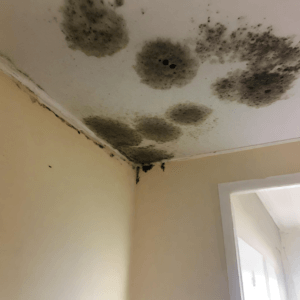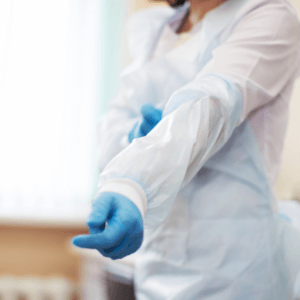Child and Pet Safety During Mould Cleaning | AllAces
Child and Pet Safety During Mould Cleaning
Key Takeaways
- Use Safe Cleaning Agents: Opt for non-toxic, environmentally friendly cleaning solutions like distilled white vinegar, baking soda, and hydrogen peroxide to ensure child and pet safety during mould cleaning.
- Secure the Cleaning Area: Ensure that the area where mould cleaning is occurring is inaccessible to children and pets to prevent exposure to mould and chemical cleaning agents.
- Maintain Proper Ventilation: Keep the area well-ventilated during the cleaning process to help disperse any harmful fumes and reduce the concentration of airborne mould spores.
- Wear Protective Gear: Use gloves, goggles, and a face mask or respirator during mould cleaning to protect against inhaling mould spores or contacting cleaning chemicals.
- Regular Home Inspections: Conduct regular inspections and maintain your home to prevent mould growth, focusing on areas prone to moisture like bathrooms, kitchens, and basements.
Summary
This article provides detailed guidance on ensuring child and pet safety during mould cleaning. It emphasises using non-toxic cleaning solutions, securing the cleaning area, maintaining proper ventilation, and wearing protective gear. The importance of regular home inspections to prevent mould and educating household members on safety protocols is also highlighted, ensuring a safe environment while managing mould issues effectively.
When it comes to maintaining a healthy living environment, the removal of mould is crucial. However, it’s equally important to ensure the safety of children and pets during the mould cleaning process. Mould exposure can be particularly harmful to these vulnerable groups, making it essential to implement safety measures that protect them while cleaning activities are underway.
Understanding the Risks of Mould to Children and Pets
Children and pets are more susceptible to the adverse effects of mould due to their developing immune systems and smaller body sizes, which lead to higher exposure per body weight compared to adults. Mould can produce allergens, irritants, and in some cases, toxic substances known as mycotoxins. Inhalation or contact with these can lead to respiratory issues, allergic reactions, and even more severe health problems.
Safe Mould Cleaning Practices to Protect Your Family
Choosing Safe Cleaning Agents
Many commercial mould removers contain harsh chemicals that can pose health risks if inhaled or if they come into contact with skin. For child and pet safety, opt for non-toxic, environmentally friendly cleaning solutions. Ingredients like distilled white vinegar, baking soda, and hydrogen peroxide provide effective cleaning power without the dangers associated with stronger chemical cleaners.
Securing the Area
Before beginning the mould cleaning process, ensure that the area is completely inaccessible to children and pets. Use baby gates or close doors to block entryways, or consider cleaning during times when children are at school or pets can be safely confined to another part of the home.
Proper Ventilation
Always keep the space well-ventilated to disperse any fumes and reduce the concentration of airborne mould spores during cleaning. Open windows and doors and use fans to maintain air circulation. This step is crucial to dilute any volatile organic compounds (VOCs) released from cleaning products and to help speed up the drying process, which inhibits further mould growth.
Wearing Protective Gear
When cleaning mould, wear gloves, goggles, and a face mask or respirator to avoid direct contact with mould and cleaning agents. This is particularly important in areas with heavy mould infestation. Such protective gear not only prevents you from breathing in mould spores but also from transferring spores to other areas of your home, minimising the spread of mould.
Immediate Clean-Up and Disposal
After mould removal, clean all tools and protective gear used during the process. Double-bag any rags or disposable items used in cleaning and dispose of them promptly to prevent mould spores from spreading. Ensure that cleaning cloths are washed immediately or disposed of properly.
Post-Cleaning Air Quality Control
After cleaning, it’s essential to maintain good air quality and reduce any lingering spores to prevent re-exposure. Consider using air purifiers with HEPA filters to capture any remaining spores in the air. Keep monitoring humidity levels and address any moisture issues to prevent the mould from returning.
Educating Family Members
Educate everyone in the household about the dangers of mould and the importance of keeping the cleaning areas off-limits during the remediation process. Understanding why these precautions are necessary can help family members cooperate more fully with safety measures.
Regular Inspections and Maintenance
Regularly inspect your home for signs of mould growth, particularly in prone areas like bathrooms, kitchens, and basements. Address leaks and moisture issues promptly to prevent mould from taking hold. Routine maintenance checks can prevent the recurrence of mould issues and the need for extensive cleaning processes that could disrupt your home environment and pose risks to children and pets.
Protecting the most vulnerable from the hazards of mould cleaning requires careful planning, the use of safe cleaning agents, and strict adherence to safety protocols. By taking these steps, you can ensure a safe environment for your entire family while effectively managing mould issues.
FAQs
What are the safest mould cleaning solutions to use at home?
Safe mould cleaning solutions include distilled white vinegar, baking soda, and hydrogen peroxide. These non-toxic options effectively remove mould without the health risks associated with harsh chemicals.
How can I prevent mould from growing in my home?
Preventing mould growth involves controlling humidity levels, ensuring proper ventilation, fixing leaks promptly, and keeping surfaces clean and dry. Using dehumidifiers and regularly checking for water accumulation can also help.
Is it necessary to hire a professional for mould removal?
While small mould issues can often be handled with DIY methods, large infestations or mould resulting from water damage should be addressed by professionals. They have the equipment and expertise to safely and thoroughly remove mould.
Why Choose AllAces?
AllAces Cleaning & Restoration has over 35 years of industry experience handling extensive mould cleaning and removal projects across Brisbane, Sydney, Melbourne and surrounds. Our IICRC-certified technicians are highly trained and experienced utilising the latest technology and equipment to ensure the return of a pre-loss condition.


